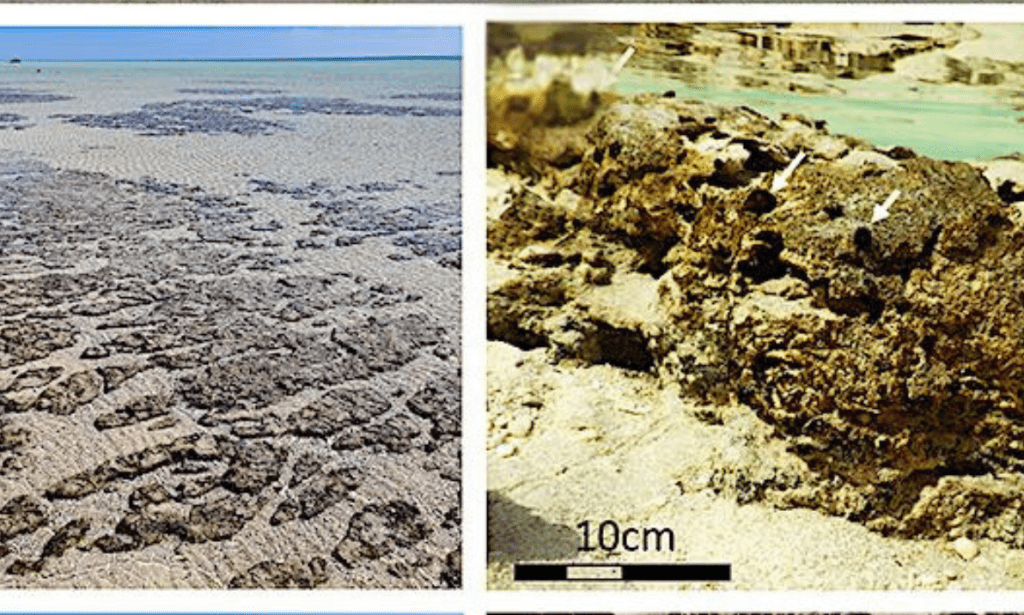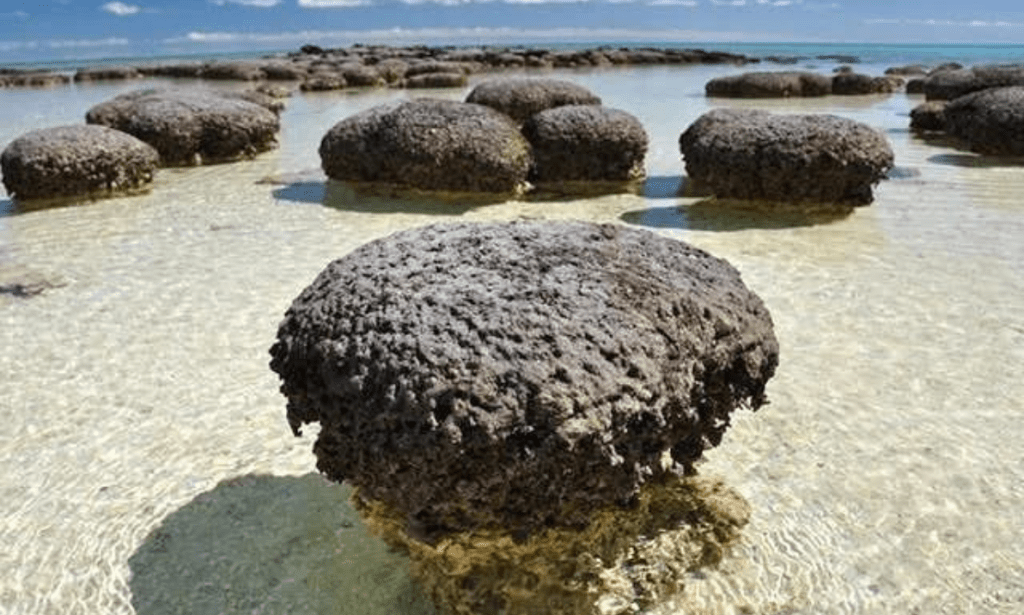Along Saudi Arabia’s Sheybarah Island, a major historical discovery was made. The earliest geological record of life on Earth, known as stromatolites, was found on that very island by professor Volker C. Vahrenkamp.
What Are Stromatolites?
Stromatolites are layered deposits made mainly from limestone formed by the growth of blue-green algae. They first appeared 3.48 billion years ago and dominated the planet. At that time, they were the sole living carbonate factory on Earth, which did not have oxygen.


How Were They Found In Saudi Arabia?
Vahrenkamp, a professor of geology, was studying tepee structures at Sheybarah Island, which are salt crust domes that can be seen from space when he found the unassuming stromatolite field. It was a surprising find but not the first time the geologist came across the structure.
When he was in the Bahamas, he came across stromatolites, “When I stepped on them, I knew what they were,” explains Vahrenkamp. “It is 2000 km of carbonate platform coastline, so in principle it is a desirable area to look for stromatolites.”
Also, finding the structure in the Saudi island makes sense, knowing how that particular island is similar to the Bahamas in terms of environmental conditions and temperatures.
What Does This Discovery Mean?
Vahernkamp’s discovery will help give scientists the opportunity to better understand the formation and growth of stromatolites. This, in part, will help scientists learn more about early life and ocean evolution on Earth as well as what life is like on other planets, knowing that the stromatolites existed at a time when Earth had no oxygen.



